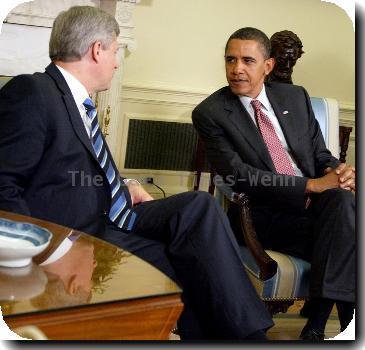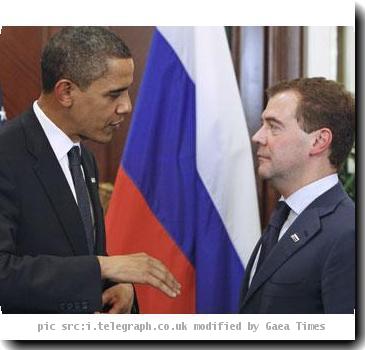NATO intel official: Reforms needed in US intelligence gathering in Afghanistan
By Deb Riechmann, APTuesday, January 5, 2010
NATO official: US intel lacking in Afghanistan
KABUL — NATO’s top intelligence officer has ordered significant changes in the way information is collected and shared in Afghanistan, saying that without reform the U.S. intelligence community will continue to be only “marginally relevant” to the counterinsurgency mission.
In a stinging assessment of the U.S. intelligence effort after eight years of war, U.S. Maj. Gen. Michael Flynn directed intelligence workers to focus less on the enemy and more on civilian life.
The report was compiled before a suicide bomber killed seven CIA operatives in eastern Afghanistan. The CIA is not mentioned in Flynn’s report, which focuses more on the thousands of uniformed and civilian intelligence personnel serving with the Defense Department and joint interagency operations in the country.
Flynn’s reform plan was published Monday by the Center for a New American Security think tank in Washington. Flynn acknowledges that releasing the 26-page report through a think tank was unconventional, but the report was aimed at commanders and intelligence professionals in Afghanistan and in the United States and Europe.
The report said field agents are not providing the kind of intelligence that analysts need to respond to inquiries from President Barack Obama and the top commander in Afghanistan, Gen. Stanley McChrystal.
“These analysts are starved for information from the field — so starved, in fact, that many say their jobs feel more like fortune telling than serious detective work,” said the report. “It is little wonder then that many decision makers rely more on newspapers than military intelligence to obtain ‘ground truth.’”
Intelligence gathering in Afghanistan suffered a deadly blow on Dec. 30 when a suicide bomber — believed to have been a Jordanian working as a double agent — killed seven CIA employees and a Jordanian intelligence officer inside Camp Chapman, a highly secured forward base in Khost province in eastern Afghanistan.
In conventional warfare, troops depend on big picture intelligence to figure out their ground strategies. However, in a counterinsurgency, troops, aid workers and others on the ground are usually the best informed about the enemy, the report said. Brigade and regional command intelligence summaries that rehash the previous day’s fighting are of little use compared with periodic reports that also address changes in the local economy, corruption and governance.
However, Flynn wrote, U.S. intelligence officials and analysts have spent too much energy focused on enemy activities and are “ignorant of local economics and landowners, hazy about who the power brokers are and how they might be influenced, incurious about the correlations between various development projects … and disengaged from people in the best position to find answers.”
The officials “can do little but shrug in response to high-level decision makers seeking the knowledge, analysis and information they need to wage a successful counterinsurgency,” said the report, which was co-authored by Flynn’s adviser, Capt. Matt Pottinger, and Paul Batchelor with the Defense Intelligence Agency.
“The U.S. intelligence community is only marginally relevant to the overall strategy,” the report concluded.
“I don’t want to say we’re clueless, but we are,” according to an operations officer quoted in the report. “We’re no more than fingernail deep in our understanding of the environment.”
Field intelligence officers should not limit their reports to diagraming insurgent networks, Flynn said. They must also provide information about meetings with villagers and tribal leaders, translated summaries of local radio broadcasts that influence local farmers and field observations of Afghan soldiers and aid workers.
In the report, Flynn orders teams of analysts be assembled to collect information on a myriad of subjects at the grassroots level to replace the current practice of having one analyst study governance, a second look into narcotics trafficking and a third insurgent networks. Unclassified portions of the material will then be made available to the military, donor nations and aid workers.
“The authors of this document outline changes that must occur throughout the intelligence hierarchy,” the report said. “Its contents should be considered a directive by the senior author. … We chose to embody it in this unconventional report, and are taking the steps to have it published by a respected think tank, in order to broaden its reach.”
The Center for a New American Security was co-founded by Michele Flournoy, who has since become the undersecretary of defense, the Pentagon’s policy chief. The think tank provides analysis and proposes defense and national security policy changes and its reports are widely read by the military community.
When he took command in Afghanistan in June 2009, McChrystal made similar calls for collecting more “white” information about local goings-on along with “red” analysis about enemy activities. Lt. Gen. David Rodriguez, second-in-command to McChrystal, subsequently ordered regional commands to begin answering wide-ranging questions about the Afghan government and local populations. Little, however, has changed in the collection of mostly enemy-related intelligence, the report said.
The report quotes McChrystal as saying in a recent meeting: “Our senior leaders, the chairman of the Joint Chiefs of Staff, the Secretary of Defense, Congress, the president of the United States — are not getting the right information to make decisions with. We must get this right. The media is driving the issues.”
Tags: Afghanistan, As-afghanistan, Asia, Barack Obama, Central Asia, Defense Policy, Kabul, Military Intelligence, North America, Political Organizations, Think Tanks, United States

